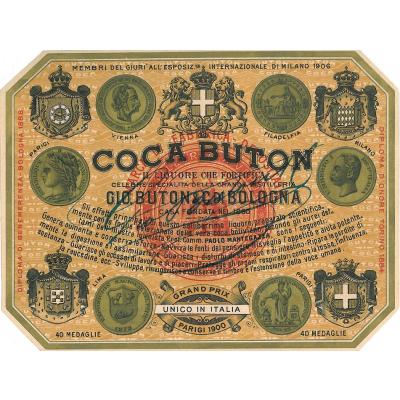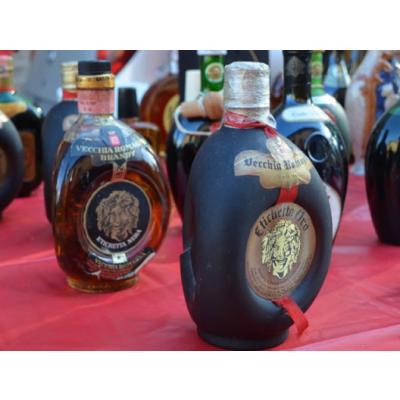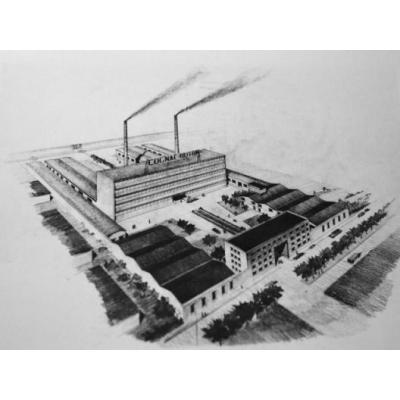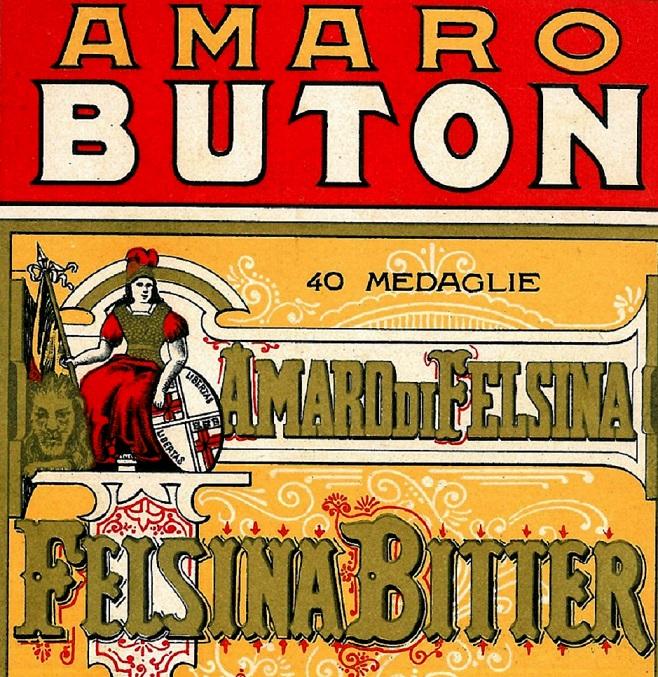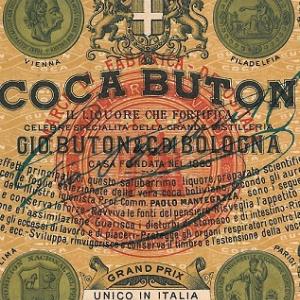Schede
Marquis Filippo Sassoli dé Bianchi re-founded the Buton liqueur distillery, born in 1820 from the partnership between Napoleonic veteran Jean Bouton (former supplier to the French royal house, coming from a family of distillers from Charente) and Giacomo Rovinazzi, a confectioner under the Pavaglione portico. Since 1830, “Gio. Buton s.p.a' has been based in Bologna in viale Pietramellara, where it has produced highly successful distillates such as Amaro Felsina, Crema Cacao, Cognac Buton, Coca Boliviana and even a gum-based syrup, described as a “sovereign preservative against chest diseases”. In 1900, the company participated in the Exposition Universelle in Paris with a sumptuous Art Nouveau kiosk, work of Ermete Maccaferri, which was awarded a gold medal. In 1939, Count Achille Sassoli de Bianchi launched the product that would make Buton the leading Italian liquor company: the “Vecchia Romagna” brandy. After the Liberation, it was a great success with American soldiers stationed in Bologna. In the 1960s, also thanks to effective advertising starring Petronian actor Gino Cervi, “Vecchia” would become the brandy that “creates an atmosphere”. Buton's constant growth would only be interrupted by the crisis of the 1980s, when the brand would be acquired by the Seragnoli family, owners of the Montenegro company.
From “L'Ancora - giornale quotidiano per le Romagne, Marche ed Umbria”, Bologna, year VII no. 10 - 15 January 1874: For those who do not know, we will say that Mr and Mrs Paluggay are the owners of the Palazzo dei Vini, a grandiose and elegant oenological establishment erected in the vicinity of Presburg (Hungary) where the most renowned Hungarian wines are made and received, and not only those, but also wine products from all parts of Europe that have earned the reputation of being exquisite. Countless barrels, and thousands of bottles, ready to leave for any destination, are in the basement of the establishment, which is equipped with all the tools and equipment that the art of wine-making proposes and suggests. (...) The central geographic position in which our city finds itself, and much more the fame that the Buton e C. company, so well managed by Mr Camillo Rovinazzi, was able to acquire with its specialities in Italy and abroad, and its exemplary honesty, have led Mr and Mrs Palugyay to the choice of their representative in Italy: a choice that, we are happy to say, could not have been made better.
This is how it is described in the “Guida illustrata di Bologna - Storica artistica industrial” (Illustrated Guide to Bologna - Historic artistic industrial), published in 1892 by the Successori Monti Typography: The Steam Distillery of the Giovanni Buton e C. Company, owned by the Rovinazzi brothers is, without a doubt, one of the most important ones in Bologna. This Distillery, among its world-famous specialities, boasts the Elixir Coca Boliviana and Amaro di Felsina, as well as some others. Elixir Coca, prepared from the leaves of the real Bolivian Coca, is certainly a valuable reviving product. One of the first to recommend the use of Coca in Italy was Mantegazza, who based his recommendation on observations made during his travels through Peru and Bolivia. He saw that those peoples often consumed it, chewing its leaves, when they especially needed to endure great exertion or undertake long walks under the scorching sun. Experiences thereafter showed that Coca has the power to excite the nervous functions, especially those of the brain. These effects result from cocaine, an alkaloid that is contained in Coca leaves, as chemical analysis showed. Cocaine also has a beneficial effect on indigestion, intestinal pain, and heartburn. Except that the use of chewing Coca leaves would certainly not have taken root in Europe if special liqueurs had not been prepared from them. Of which the undoubtedly most effective is the Elixir Coca of the Buton Company of Bologna, rightly awarded at many Expositions, including the one in Turin in 1884. In fact, when the Buton Company put this speciality on the market, it was a real success in terms of admiration and trust, and orders came from everywhere. Because of its great success and its reputation, Elixir Coca alone could be compared to the Benedectine of France. The Amaro di Felsina is also appreciated for its tonic and digestive qualities, being made from Peruvian Cinchona and orange zest. The Buton Company, awarded thirty medals at National and World Expositions, was also recently awarded a diploma of merit in Bologna.
Translation by Lorenzo Rocco, 2022.

